Borrow
ANZ’s self-employed rethink: mainstreaming cashflow credit in Australian mortgages
Borrow
ANZ’s self-employed rethink: mainstreaming cashflow credit in Australian mortgages
ANZ’s policy shift for self-employed borrowers is more than a documentation tweak — it’s a signal that cashflow-based underwriting is moving into the mainstream.
ANZ’s self-employed rethink: mainstreaming cashflow credit in Australian mortgages
ANZ’s policy shift for self-employed borrowers is more than a documentation tweak — it’s a signal that cashflow-based underwriting is moving into the mainstream.

With small-business owners and contractors forming a large slice of the workforce, the major banks are racing to recalibrate risk models without compromising prudential settings. Expect sharper competition with non-banks, pressure on broker-driven acquisition funnels, and a measured loosening of a long-standing bottleneck in credit access. The winners will be lenders that marry richer data with disciplined risk controls.
Key implication: ANZ’s changes are a watershed for how Australian lenders treat non-salaried income, and they will likely catalyse a broader shift across the majors as competition intensifies for small-business and contractor customers. The move points to a future where verified cashflows, not just tax returns, drive mortgage decisions — expanding access while testing lenders’ risk disciplines in a still-high interest-rate environment.
Market context: a big, underserved and strategically valuable segment
Australia’s mortgage book exceeds A$2 trillion, yet underwriting has long been optimised for PAYG borrowers. Self-employed Australians — from sole traders to company directors — have faced heavier documentation burdens, volatile income treatment and slower cycle times. With more than 2.5 million small businesses nationwide and roughly one in ten workers self-employed, friction in this segment represents both a growth opportunity and a customer-experience gap.
Rising rates since 2022 and APRA’s serviceability buffer of at least 3 percentage points have tightened borrowing capacity, particularly for those with variable income. At the same time, broker share of mortgage originations has climbed above 70%, reflecting customers’ need for specialist navigation — especially acute for self-employed borrowers. ANZ’s recalibration aims to capture share where non-banks and specialist lenders (e.g., alt-doc providers) have been harvesting demand at a 100–300 bp pricing premium to the majors.

Competitive dynamics: a new front in the majors’ mortgage wars
Viewed through Porter’s Five Forces, the shift narrows a key advantage of non-bank challengers (flexible income assessment) while reinforcing broker channel bargaining power. Expect:
- Rival response: Westpac, NAB and CBA have each made incremental policy refinements for small-business owners over the past year. ANZ’s move will likely prompt further harmonisation — for instance, greater acceptance of most-recent-year income where upward trends are verified, or streamlined BAS/ATO data capture.
- Channel competition: Brokers will arbitrage policy nuance across lenders to maximise approvals and borrowing capacity for clients, making speed-to-yes and documentation simplification critical differentiators.
- Non-bank repositioning: Specialist lenders will lean harder on speed, higher LVR tolerance, and nuanced risk-based pricing to defend share as the majors encroach on their traditional pool.
Technical deep-dive: what “easier for self-employed” actually means
While each bank’s credit policy differs, meaningful improvements typically involve three levers:
- Income verification modernisation: Incorporating bank-statement analytics, BAS data, and real-time feeds from accounting platforms (e.g., Xero, MYOB, QuickBooks) to validate trading income and expense stability. Consumer Data Right (open banking) connections reduce friction and manual errors.
- Income treatment calibration: Allowing the most recent financial year to be used when earnings are trending up (with evidence), refined add-backs for non-cash expenses, and clearer handling of ATO debts and company distributions to the borrower.
- Risk segmentation and pricing: More granular assessment by industry volatility, business tenure, and cashflow resilience, often paired with dynamic haircuts rather than blanket conservatism. This preserves APRA-aligned prudence while widening the approval aperture.
Interactions with lenders mortgage insurance (LMI) are pivotal: LVR above 80% typically triggers LMI premiums of roughly 1–2% of the loan amount. If majors broaden LMI waivers for strong self-employed profiles or secure more accommodating insurer criteria, borrowing costs could fall materially for this cohort. Watch for insurer–bank alignment as a practical constraint on how far flexibility can extend.
Regulatory lens: flexibility without diluting prudence
APRA’s expectations remain clear: robust income verification, conservative buffers and credible expense assessment. A move to richer, verified data sources is aligned with that posture. The risk is not flexibility per se, but model drift or over-reliance on short-run earnings in cyclical industries. Lenders will need to document their decisioning logic and maintain model risk governance — including challenger models, back-testing and stress overlays — particularly as machine learning augments traditional scorecards.
“Inclusive lending” is how ANZ’s Paul Presland has framed the intent — a nod to the economic role of small business and the need to recognise modern, non-linear income. The prudential bar will be whether default and hardship rates for self-employed cohorts track within expectations if the economy softens.
Business impact: operations, P&L and customer lifetime value
For ANZ, the upside case is compelling: greater mortgage conversion from the broker channel, lower abandonment due to paperwork friction, and cross-sell into business banking, cards and deposits. Cost-to-serve falls as digital verification replaces manual file chasing; time-to-yes compresses, improving broker Net Promoter Scores and referral rates. On the risk side, heightened sensitivity to macro shocks (e.g., a demand slowdown hitting sole traders) requires tighter early-warning systems and proactive hardship engagement to protect loss rates and brand.
At a market level, improved access for self-employed borrowers modestly widens the buyer pool. In a housing market still constrained by supply, this may add marginal demand, but affordability remains anchored to the RBA’s rate path and income growth. For SMEs, unlocking home equity can be catalytic — funding working capital or expansion — reinforcing the bank–business ecosystem.
Global parallels: what other markets tell us
Internationally, lenders have been moving in a similar direction. In the US, agency lenders have piloted cashflow-based assessments that incorporate rent and bank transaction histories to expand approvals for “thin-file” borrowers. UK banks increasingly accept one year of accounts for established professionals with stable pipelines. The through-line: better data plus granular risk controls can responsibly widen access — but requires disciplined feedback loops as economic conditions change.
Execution reality: what it takes to make this work
- Data and integration: Build CDR and accounting-platform integrations with high uptime; deploy bank-statement analytics tuned for seasonality and industry cycles (e.g., construction, hospitality).
- Credit policy playbooks: Clear, version-controlled guidance for assessors and brokers; dynamic income haircuts tied to volatility and business tenure; consistent treatment of ATO debt and retained earnings.
- Model governance: Champion/challenger frameworks, stress testing against revenue shocks, and explainability for any ML components to satisfy audit and prudential reviews.
- Insurer alignment: Early engagement with LMI providers to ensure policy flexibility is insurable — and priced — across the LVR spectrum.
- Broker enablement: Training and digital checklists that reduce rework; fast escalation paths for complex structures (trusts, partnerships).
Outlook: from policy change to market standard
As majors converge on more inclusive self-employed settings, the competitive frontier will shift to experience (speed, certainty), data depth and risk pricing sophistication. If economic conditions remain orderly and arrears stable, we should expect incremental broadening — potentially including targeted LMI concessions for strong files — over the next 12–18 months. If unemployment ticks up, lenders will likely lean on dynamic haircuts rather than retrench wholesale.
The strategic takeaway for banks is straightforward: cashflow intelligence is becoming table stakes. For business owners and contractors, the message is equally clear — cleaner books, connected data and documented resilience will translate into cheaper, faster credit. That’s a win for both sides of the ledger.

Loans
Rate relief ignites a mortgage scramble — and a technology arms race
Australia’s rate easing has flipped mortgage demand from ‘defend and retain’ to ‘originate and grow’. Refinance waves and a rekindled purchase market are colliding with digitisation, broker dominance ...Read more

Loans
Trust is the moat: How brokers can win in an AI-accelerated, commoditised mortgage market
In an evolving mortgage landscape where algorithms are levelling the playing field, Australian mortgage brokers are finding that trust, rather than price or speed, is becoming their most valuable ...Read more

Loans
CreditSmart revolutionises hardship support and lenders risk missing out
Australians under cost‑of‑living pressure are sidestepping hardship help because they fear a permanent stain on their credit file. Arca’s CreditSmart initiative has thrust this misconception into the ...Read more

Loans
Australia’s 40‑year mortgage moment: affordability optics, lifetime cost, and the new risk calculus
Forty‑year home loans are shifting from niche to feature in Australia, led by challenger banks and mutuals courting first‑home buyers. The headline promise—lower monthly repayments—masks a material ...Read more

Loans
The mortgage-regret economy: Why borrower confusion is reshaping Australia’s home-loan playbook
Mortgage regret has become a measurable market force, driving record refinancing, rising arrears off a low base, and a scramble by lenders and brokers to redesign the borrower journey. With the ...Read more

Loans
SME lending becomes the new gold rush as banks shift focus beyond home loans
Mortgage broking is maturing, and the next growth curve is hiding in plain sight: small business credit. With Australia’s SME lending pool topping roughly $631 billion in early 2024 and growing at ...Read more

Loans
First-home buyers' $31k blunder reshapes Australia's mortgage game
Australia’s $11.6 trillion housing market is booming again, but so are regrets among first-time borrowers who moved too quickly. A new wave of early refinances, broker-led interventions and lender ...Read more

Loans
Navigating the Australian student loan landscape: Options for financing your education
Securing financing for post-secondary education is a significant step for many Australians, offering a pathway to advancing career prospects and achieving personal growth. Read more

Loans
Rate relief ignites a mortgage scramble — and a technology arms race
Australia’s rate easing has flipped mortgage demand from ‘defend and retain’ to ‘originate and grow’. Refinance waves and a rekindled purchase market are colliding with digitisation, broker dominance ...Read more

Loans
Trust is the moat: How brokers can win in an AI-accelerated, commoditised mortgage market
In an evolving mortgage landscape where algorithms are levelling the playing field, Australian mortgage brokers are finding that trust, rather than price or speed, is becoming their most valuable ...Read more

Loans
CreditSmart revolutionises hardship support and lenders risk missing out
Australians under cost‑of‑living pressure are sidestepping hardship help because they fear a permanent stain on their credit file. Arca’s CreditSmart initiative has thrust this misconception into the ...Read more

Loans
Australia’s 40‑year mortgage moment: affordability optics, lifetime cost, and the new risk calculus
Forty‑year home loans are shifting from niche to feature in Australia, led by challenger banks and mutuals courting first‑home buyers. The headline promise—lower monthly repayments—masks a material ...Read more

Loans
The mortgage-regret economy: Why borrower confusion is reshaping Australia’s home-loan playbook
Mortgage regret has become a measurable market force, driving record refinancing, rising arrears off a low base, and a scramble by lenders and brokers to redesign the borrower journey. With the ...Read more

Loans
SME lending becomes the new gold rush as banks shift focus beyond home loans
Mortgage broking is maturing, and the next growth curve is hiding in plain sight: small business credit. With Australia’s SME lending pool topping roughly $631 billion in early 2024 and growing at ...Read more

Loans
First-home buyers' $31k blunder reshapes Australia's mortgage game
Australia’s $11.6 trillion housing market is booming again, but so are regrets among first-time borrowers who moved too quickly. A new wave of early refinances, broker-led interventions and lender ...Read more

Loans
Navigating the Australian student loan landscape: Options for financing your education
Securing financing for post-secondary education is a significant step for many Australians, offering a pathway to advancing career prospects and achieving personal growth. Read more








